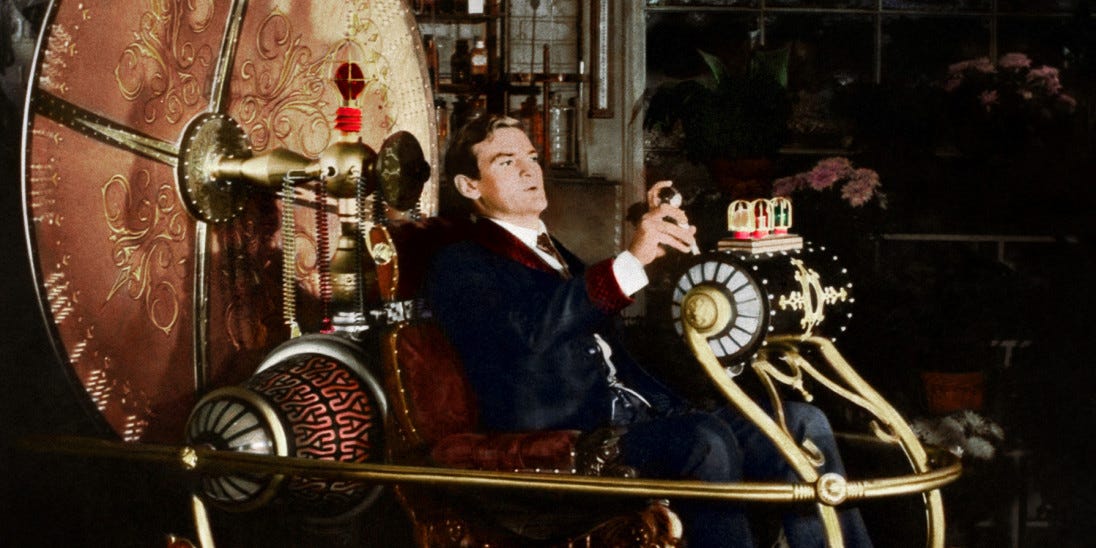How to use a ‘time machine’ to set longterm goals
An exercise which can get aspirations for the future out in the open and help set a direction a team can iterat

I established in an earlier post:
In this post, we will cover one exercise which can contribute to the team having a shared vision of the future for the way they work and what they produce — I call it the Time Machine.
In preparation
Book a workshop with a decent amount of time allocated — for the sake of an example let’s say at least 3 hours but feel free to set for longer — this is an investment and as long as you have a workshop plan which manages the team’s cognitive load, a long session can work well). Push past feelings that there isn’t time for the luxury of spending time in a workshop and not being busy delivering — you are moving slowly anyway. It stands to reason that if we can lift the average velocity in achieving outcomes then hours in a workshop are paid for soon after such an improvement is realised.
The main activity in the workshop is brainstorming. As I mentioned there are various options out there for exactly how you run this or you can devise your own using the outline in this post, I will focus on getting the gist across.
The first activity (first session or pre-work prior to workshop)
We need to set the baseline for the team on the realities of the present-day — so we need to time acknowledging and capturing the current state with a brainstorm. Brainstorms can be tiring and this exercise suggests we do two so as an alternative, the baseline might be something you can instead acquire through a survey or similar approach ahead of time. If you opt for this alternative you can still use the questions below as a starting point.
The goal of this part is to ask the questions below to paint as a group a clear picture of the current state. Check in with the team on the result of the brainstorm / pre-survey to get a feeling of the degree of alignment on the current issues and practices. Synthesise into specific topics — we can use these to help us later in the workshop.
Example questions we can use for each brainstorm (present-day and future)
Questions (examples only — generate your own)
What tools are we using?
What practices have we adopted?
How are these working out for us?
What results are we getting?
How do our customers feel? What are they saying?
How do our other internal teams feel (e.g. sales, customer service, marketing etc.)? What are they saying?
Are we spending less time deploying?
Are we able to deploy with more confidence? Are we having fewer failures? Do our engineers know our systems better? Is support reducing?
The second activity — time to accelerate to 88 miles per hour!
Spend some time establishing with the team they are now imagining a time significantly into the future, which could be 6 months to 3 years into the future — it just needs to be long enough to be well beyond the present-day iterations and short-termism that the team may be locked into.
Conduct a brainstorm again now imagining themselves in the future having had tremendous success between present-day and that day in the future. We are again asking our prompting questions but also open to whatever other description of the improved state they are providing.
Sometimes brainstorming can be very tiring so I might typically break up the session with some different or other unrelated activity on a different topic using a different type of thinking — maybe something social or focused on emotional aspects of team cohesion. Once recuperated and back in the right headspace, after an appropriate break from brainstorming, we next need to synthesise the results of the brainstorm.
This can be done in a variety of ways, as a group, a subset of a group or by an individual. If done with less than the full group it’s advisable to walk through the full group with how the synthesis was approached and the result. Help them feel part of the journey by checking in:
“Does this reflect what they collectively would like to see in the future?”
“Can we derive distinct outcomes we can be striving towards?”
“What out of each of these outcomes is most important to customers? To internal staff? To the team?”
For a team to make choices that make more significant progress they must have a clear view of what the new tomorrow looks like. Even better once there are some short simple phrases which describe those outcomes further effort mapping out relationships between these and the actions which the group hypothesise could help achieve these outcomes further helps to crystalise things that are important to try and what is important not to lose sight of.
From here I often work with teams to further build this view of the future into a more useful information asset which they can refer to ongoing. More on this in later posts.
Have you tried a similar activity? What approach do you use? How well has it worked? Share your experiences with me in the comments — my goal is to make these posts the most useful reference they can be so share your ideas and I will continue to improve each post.




